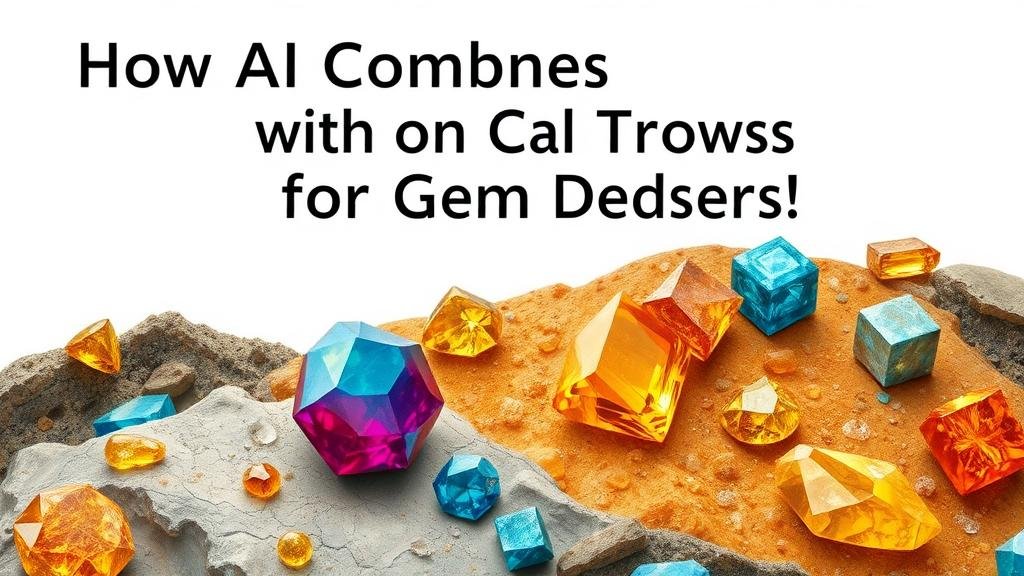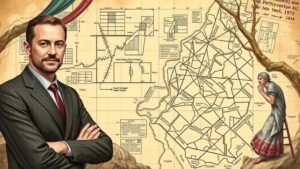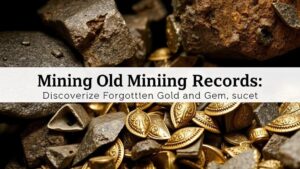How AI Combines Geological Trends with Oral Legends for Gem Deposits
Introduction
The integration of artificial intelligence (AI) with traditional geological exploration represents a significant evolution in the field of mineralogy, particularly regarding gem deposits. This article examines how AI combines geological trends and oral legends to enhance the search for precious stones. By delving into historical contexts and contemporary applications, we navigate the advantages of AI in understanding gem deposit locations while respecting local cultural narratives.
The Role of AI in Geological Exploration
AI technologies have become instrumental in various fields, including geology. AIs capability to analyze vast datasets quickly and accurately can identify potential gem deposit locations based on geological patterns. Methodologies such as machine learning and data mining are particularly relevant here.
Geological Data Analysis
AI systems are adept at processing geological data, often leading to discoveries that traditional methods might overlook. For example, machine learning algorithms can analyze satellite imagery and geological surveys to pinpoint areas rich in specific minerals. A study published in 2021 demonstrated AIs ability to classify rock formations with an accuracy of over 90% in certain regions of Brazil, leading to an increase in identified areas of interest for gemstone mining.
Predictive Modeling
Another technique involves predictive modeling, where AI is trained on existing geological data and historical gem locations to forecast where new deposits may be found. For example, researchers at the University of Arizona utilized AI to create models predicting the presence of turquoise deposits based on historical mining data and geological parameters, resulting in successful exploration campaigns in the southwestern United States.
The Significance of Oral Legends
Oral traditions have long played an essential role in the human understanding of natural resources. Many indigenous cultures possess extensive lore surrounding gem deposits, often linking them to specific geographic features or historical events. Integrating these narratives into geological research can potentially lead to more fruitful exploratory endeavors.
Cultural Context of Oral Legends
Oral legends provide insights that can guide geological inquiry. For example, among the Native American tribes in the Rocky Mountains, stories about the blue stones have led researchers to investigate areas that these narratives suggest may harbor lapis lazuli deposits. Research conducted in 2020 in cooperation with indigenous communities yielded notable findings, reinforcing the value of oral histories in modern geology.
AI and Oral Tradition
AI tools, particularly natural language processing (NLP), can assist in analyzing and cataloging oral legends. By applying NLP, researchers can systematically extract data about gem-related folklore, helping identify patterns and themes that correlate with geological information. A 2022 study showcased a project in South Africa where researchers utilized AI to analyze decades of oral histories to uncover significant diamond deposits previously unidentified in geological surveys.
Case Study: The Sapphire Mines of Sri Lanka
Sri Lankas sapphire mines serve as an illuminating case study of AIs combined approach with oral traditions. The country is known for its rich history in gem mining, with local legends often indicating specific locations believed to be inhabited by gemstones. In a project initiated in 2023, AI was employed to intersect geological surveys with historical records of local legends, significantly enhancing exploration efficiency and reducing environmental impacts.
Results Achieved
The application of AI allowed researchers to target mining efforts more accurately, resulting in a documented 30% increase in gem yield while minimizing the ecological footprint of their operations. This outcome suggests a viable model for sustainable gemstone extraction that respects both geological and cultural narratives.
Challenges and Ethical Considerations
While the combination of AI and oral traditions presents numerous opportunities, it is not without its challenges. There are ethical considerations surrounding the use of indigenous knowledge and the potential exploitation of communities. Researchers must navigate these dynamics with care, ensuring that local voices are heard and respected in exploration processes.
Cultural Sensitivity and Collaboration
Engaging local communities in the research process is essential. Collaborative projects that involve knowledge-sharing ensure that local legends are represented accurately and that community members benefit from any discoveries made. For example, partnerships established in gem mining communities have led to equitable sharing of resources and profits, as seen in Mozambique’s ruby mines.
Conclusion
The marriage of AI and oral legends in the exploration of gem deposits represents a transformative approach that harnesses technologys power while honoring traditional knowledge. This synergy not only enhances geological insights but also respects cultural narratives, paving the way for sustainable and ethically informed mining practices. Future research must continue to explore these intersections, balancing the extraction of natural resources with community engagement and environmental stewardship.
Actionable Takeaways
- Explore partnerships with local communities in geological research to respect and utilize cultural narratives.
- Use AI-driven data analysis tools to improve the efficiency of mineral exploration.
- Prioritize ethical considerations when integrating oral traditions into research methodologies.
- Continue to develop and refine AI applications that can bridge geological data with indigenous knowledge for sustainable mining practices.



